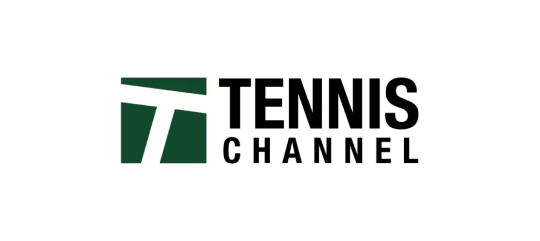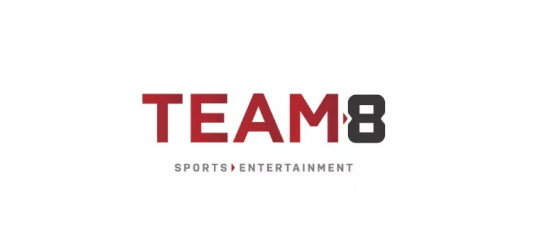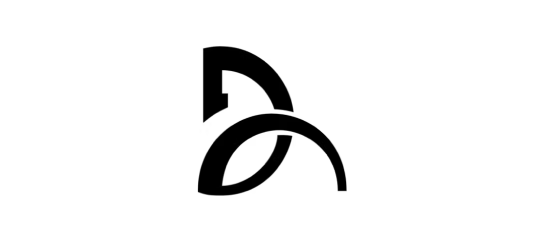WHY UTR RATING IS Gold Standard
ACCURACY
The most accurate measure of skill-level
INCLUSIVITY
Every player can have a rating, regardless of age, gender or location
ACCESS
Entry into the Universal Tennis network
ANALYSIS
Track your progress
PLAY MORE TENNIS
Meet players in your area and find local events
SHOWCASE YOUR GAME
Create your profile and track your progress
What is the UTR rating?
FAQs ABOUT UTR TENNIS RATING
FAQs ABOUT UTR TENNIS RATING
How does the rating algorithm work?
UTR Rating is a modified elo rating system that promotes fair and competitive play across the tennis world. Players are rated based on actual results, not age, gender, nationality, or socioeconomic status.
When you understand your skill level, you can find hits, events, and tournaments where you’ll have fun, play competitive tennis, and improve your game. All you need to know is your UTR Rating!
Read more here.
What is a UTR Rating? Why should I have one?
A UTR Rating is a number that provides a real and accurate measurement of skill level. A player’s UTR Rating is a number between 1.00 and 16.50.
One match result is all it takes to receive a projected UTR Rating. After approximately five matches, the rating becomes fully reliable. As matches are played and entered into the system, a player’s UTR Rating will increase or decrease over time to reflect their current skill level.
Watch the explainer video here.
How is the UTR Rating calculated?
For each match, the algorithm calculates a match rating and a match weight for each player. A player’s UTR Rating is the weighted average of up to 30 of their most recent match ratings. Only matches within the last 12 months count toward a player’s UTR Rating.
Read detailed explanation here.
What's the best way to improve my UTR Rating?
Play Well.
Performing well in matches is the easiest way to improve your UTR Rating. If the match is out of hand, don’t give up! It does not matter whether you play higher- or lower-rated opponents; you can improve your UTR Rating either way by winning more games than expected.
Play Often.
The more matches you play, the quicker your UTR Rating will reflect your current form. The algorithm is especially accurate for those who play often against a variety of opponents rated above and below you.
Be Patient.
Since your UTR Rating is a rolling weighted average, the effect of new results is slightly lagged. Your UTR Rating may not fully reflect a recent outcome right away, but it will over time.
Watch the video here.
What is the impact of playing against opponents rated higher or lower than I am?
What is the impact of playing against opponents rated higher than I am?
Playing against higher-rated opponents does not necessarily lower your rating and, in some cases, can actually improve it. It all depends upon the percentage of games you win, and how much higher the opponent’s UTR Rating is. Here is a quick video describing the impact: watch the video.
Here's how it works:
If the opponent is rated too far above you and they win the match easily by winning a high percentage of games, that won’t hurt your rating, as it is the expected outcome. But your rating can get a boost if you end up playing a close match. On the other hand, such a match can lower your rating if you end up not winning a high enough percentage of games.
What is the impact of playing against opponents rated lower than I am?
Playing against lower-rated opponents does not always hurt your rating. In fact, in many cases, it helps it. Again, it all depends on the percentage of games you win and how much lower the opponent’s UTR Rating UTR is than your own.
Here is how it works:
If the opponent is rated too far below you and you win the match easily, winning a high percentage of games, your rating may not change. This is due to the outcome of the match occurring as expected.
Playing an opponent with a lower rating can raise your rating if you win a higher-than-expected percentage of games. However, if you play a close match against that lower-rated opponent, this could lower your rating.
I had some great results added to my profile but why didn't my rating go up?
UTR Ratings may not always go up with the addition of a few new results due to a combination of factors listed below:
- Since a player's UTR Rating is always calculated based on the current ratings of the recent opponents, a decline in their ratings can have a negative impact on the player's rating as well
- Older results falling off the equation if they were better than the new ones being added
- Less weight given to some good matches results as they get older due to the time degradation factor
- Since the ratings are calculated based on a player's last 30 eligible matches, the addition of a few new matches doesn't have much of an impact on the UTR Rating.
You can check these articles below to know how the algorithm works:
Why did my rating change when I haven't played recently?
UTR Rating currently recalculates daily - there can be a variety of reasons why a change (up or down) would occur. Some of these reasons could include:
- You played a player that was unrated/projected and their rating has become more reliable through more play.
- Ratings are calculated every day using the current ratings of the opponents; changes in their ratings can have an impact on your UTR Rating as well.
- Scores from more than 12 months ago fell off your record.
Remember, UTR Rating is a measurement of player skill today.
What are the factors when a match does not count towards my UTR Rating?
The algorithm excludes matches based on the following:
- A player withdraws before the match starts
- The match starts but neither player wins at least four games (due to a withdrawal/retirement)
- There is a UTR Rating difference of more than 2.00 and the higher-rated player wins as expected. Our data indicates matches with a UTR Rating difference of more than 2.00 are almost certain to be a blowout. Results like these are not indicative of either player’s skill level and are excluded by the algorithm.
Keep in mind that these excluded matches still show up on the player profile but are not used in the rating calculation.
Why does the algorithm exclude matches with a UTR Rating difference of more than 2.00?
Matches with more than 2.00 UTR Rating difference are not included in the algorithm when the higher-rated player wins as expected. Why?
As the difference in UTR Rating increases, so does the likelihood the higher-rated player wins the match easily. Our data indicates matches with a UTR Rating difference of more than 2.00 are almost certain to be a blowout. Results like these are not indicative of either player’s skill level and are excluded by the algorithm.
What is the projected UTR Rating? How many matches does it take to go from a projected to a reliable UTR Rating?
One match is all it takes to get a projected UTR Rating. After approximately five matches, your rating becomes reliable. A projected UTR Rating is shown as a (P) on the player profile.
What if I have played fewer than 30 matches within the last 12 months?
That’s perfectly fine. If you have played only 10 matches within the last 12 months, the algorithm will use those 10. 30 matches are simply the maximum. If you have played 40 matches within the last 12 months, the algorithm will use the 30 most recent matches.
Are 8-game pro sets and “4-game set” matches used for UTR Ratings?
Yes. 8-game pro sets and 4-game mini sets count for rating calculations, but receive slightly less weight relative to best-of-3 set matches.
What is the effect of walkovers, retirements/withdrawals, defaults and incomplete matches to my UTR rating?
Since our rating system is based purely on scores, it does not take into account defaults or walkovers. However, these results are still displayed on the player's profile page along with their other scores.
With regards to withdrawals, if a player withdraws either a) before the match starts or b) during the match but before either player wins at least four games, it does not factor into the UTR Rating algorithm. It will, however, be displayed on the player profile. This will hopefully be a disincentive for the small subset of players who withdraw quite frequently. We are aware of and monitoring junior players abusing the system.
Note: To know which matches are contributing to the rating, look for the gray tennis ball icon on the right-hand side of the match result. This icon allows you to easily see which matches are currently contributing to your UTR Rating today and is updated daily.
Can my UTR Rating be changed if it doesn’t look accurate to me?
The UTR Rating is automatically generated by a computerized algorithm and cannot be altered manually. We are able to add or edit incorrect or missing scores on your record, which may impact your UTR Rating.
Advanced Player Metrics - Singles and Doubles
To better help players understand their level of play over time and how they compete against higher and lower-rated players,UTR Sportsintroduces advanced player metrics! These metrics allow the user to see a player’s historical rating fluctuations and analyze wins/losses at the individual match level.
Read more here.
How does the doubles algorithm work?
The singles and doubles algorithms are very similar. For doubles, the algorithm compares the average UTR Rating of Team A to the average UTR Rating of Team B. Given the UTR Rating difference between those two averages, the algorithm expects a certain percentage of games won. The team that performs better than the algorithm’s expectation will see their match rating go up. Both teammates see an increase or decrease by the same amount.
Read more here.
What are the new rankings on the player profile?
The new rankings on the player profile stats tab show where a player stands relative to their peers in verified singles play. All rankings are gender-specific. A player can have a maximum of four rankings:
- Country Ranking by Age Category
- Country Ranking
- World Ranking by Age Category
- World Ranking
Read more here.
What is the Three-Month Trending UTR Rating?
Three-Month Trending UTR Rating is a subset of UTR Rating in which a player's rating is calculated using only matches from the last three months. UTR Rating is calculated using the 30 most recent matches within the last twelve months. Three-Month Trending UTR Rating is calculated using the 30 most recent matches within the last three months.
What is an estimated UTR Rating?
The estimated UTR rating is here to improve the overall user experience and allow Event Providers to better match their players closer to their level. The "Get Rated" Questionnaire was tested with nearly 2000 users and was found to provide an accurate range estimate of 85% of the time.
Note: Users who had fully reliable ratings within the last 24 months will not be required to answer the “Get Rated” questionnaire. Instead, your last known verified rating will display.
Who will have an estimated UTR rating?
- new users who created a new profile
- new users who claimed a profile
- existing users with an UnRated (UR) profile
How do I get an estimated UTR rating?
For new users, you will be prompted to answer a short questionnaire to get your estimated UTR rating. You can check this article on how to create and activate your player profile.
For existing users, you will need to log in to your profile click your profile icon at the top right then select, “Profile”. Once you are on your profile page, click the “Get Rated” to answer the short questionnaire.
Read more here.
Why my Best Win has changed?
The Best Win captures the player’s best-winning match in the last 12 months.
Here are the factors why a match is not considered a Best Win:
- The match has fallen off the record. Keep in mind that the algorithm includes the recent 30 matches in the past 12 months. The gray tennis ball beside the match indicates that it is included in your rating calculation.
- It is not counted toward your verified rating. The blue checkmark indicates that a match was from a verified event.
- Retired or incomplete matches are not eligible to be included in the Best Win. However, they can still count towards your rating. You can read more information here.
- The opponent’s rating is not fully reliable.
Note: This feature is available for Power Players. Now is the best time to upgrade and enjoy its awesome perks.
What is the Color Ball Rating (CBR)?
Color ball tennis creates an enhanced experience for young players to develop their tennis games using modified equipment, court sizes, and play formats. The levels of color ball tennis are defined by the ball color (red ball, orange ball, and green ball). Color Ball programming is designed to make learning tennis more accessible and fun.
What is the Color Ball Rating (CBR Rating)?
The Color Ball Rating (CBR Rating) is a rating for 12 and under players who play red, orange, and green ball matches and tournaments. The CBR Rating ranges from red (R1) to orange (O1 or O2), and finally, green (G1, G2, or G3).
Players make progress toward their eventual UTR Rating for the yellow ball by doing three things: playing often, playing well, and competing in the next color ball level events when they are ready.
Note: This rating is known as Coloured Ball Rating in Australia, the UK, and Canada. Parents are required to register on behalf of their child. You can refer to our article here on how to create a profile for them.
Read more here.
Featured Tennis Players
The UTR Rating is the world’s most accurate tennis rating system. All players regardless of age, gender, geography or skill level, are rated on the same scale from 1.00 and 16.50 based on daily match results.
D1
College Men
Futures
Pro Men
WTA
Pro Women
ATP
Pro Men
~3.0
Men NTRP
~3.0 - 3.5
Women NTRP
U12 - U14
Girls
U12
Boys
~3.0
Men NTRP
~3.0 - 3.5
Women NTRP
U12 - U14
Girls
U12
Boys
~3.0
Men NTRP
~3.0 - 3.5
Women NTRP
U12 - U14
Girls
U12
Boys
~3.5 - 4.5
Men NTRP
~4.0 - 5.0
Women NTRP
U14 - U18
Girls
U12 - U16
Boys
~3.5 - 4.5
Men NTRP
~4.0 - 5.0
Women NTRP
U14 - U18
Girls
U12 - U16
Boys
~3.5 - 4.5
Men NTRP
~4.0 - 5.0
Women NTRP
U14 - U18
Girls
U12 - U16
Boys
~3.5 - 4.5
Men NTRP
~4.0 - 5.0
Women NTRP
U14 - U18
Girls
U12 - U16
Boys
D1 - D3
College Men
D1
College Women
Futures
Pro Women
U16
Girls Nationals
D1 - D3
College Men
D1
College Women
Futures
Pro Women
U16
Girls Nationals
D1 - D3
College Men
D1
College Women
Futures
Pro Women
U16
Girls Nationals
D1 - D3
College Men
D1
College Women
Futures
Pro Women
U16
Girls Nationals
D1 - D3
College Men
D1
College Women
Futures
Pro Women
U16
Girls Nationals
D1 - D3
College Men
D1
College Women
Futures
Pro Women
U16
Girls Nationals
Join UTR Sports in three easy steps: 1) Search your name; 2) Complete your profile; 3) Find play!
READY to improve your UTR Rating?
Play tennis now!
Are you a Provider?
Explore Now

Clubs
Learn how Universal Tennis can help you build your player base, fill court time, and support level-based play to increase member loyalty.
- Run unlimited events.
- Recruit new members.
- Generate revenue.
- Flexible plans, free trial.

Colleges
Universal Tennis empowers college coaches in all areas of the sport by leveraging the gold-standard UTR Rating.
- Recruit players globally.
- Showcase your program.
- Access advanced analytics.
- Generate venue.

Academies
Join some of the world’s top academies and leverage our technology to help your students reach their full potential.
- Advanced statistics.
- Develop and recruit players.
- Level-based seeding.
- Run unlimited events.

High Schools
High school coaches enjoy innovative software specifically designed to support and elevate the sport for their student-athletes.
- Make scores count.
- Run official high school events.
- Scout opposing teams.
- Run fundraisers.

Federations
Universal Tennis collaborates with governing bodies across the globe with the goal of increasing participation, level-based play, and broadened pathways for aspiring players.
- UTR Pro Tennis Tour.
- Level-based play.
- Increase participation.
- Pathway to U.S. collegiate tennis.


 Watch now
Watch now














